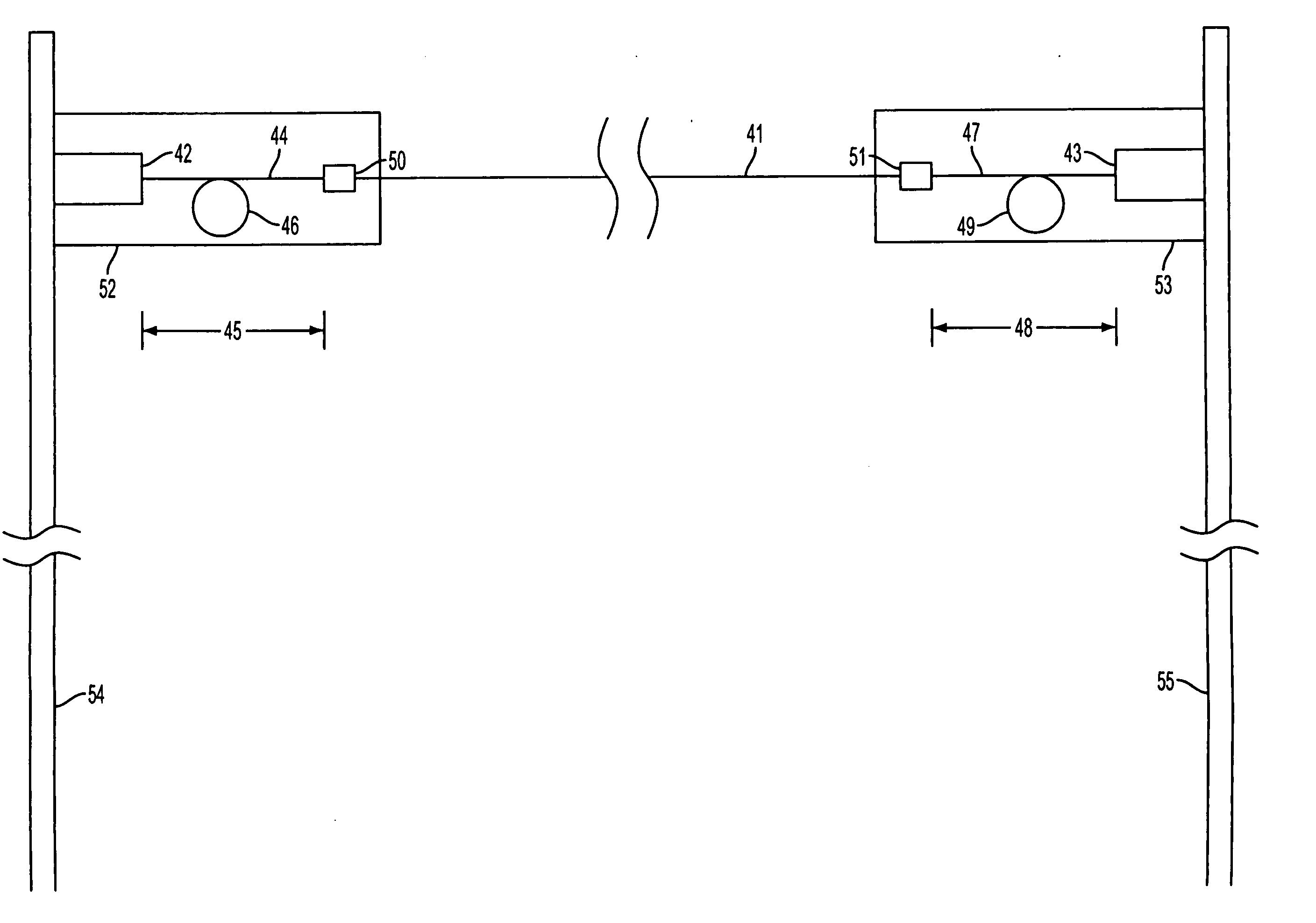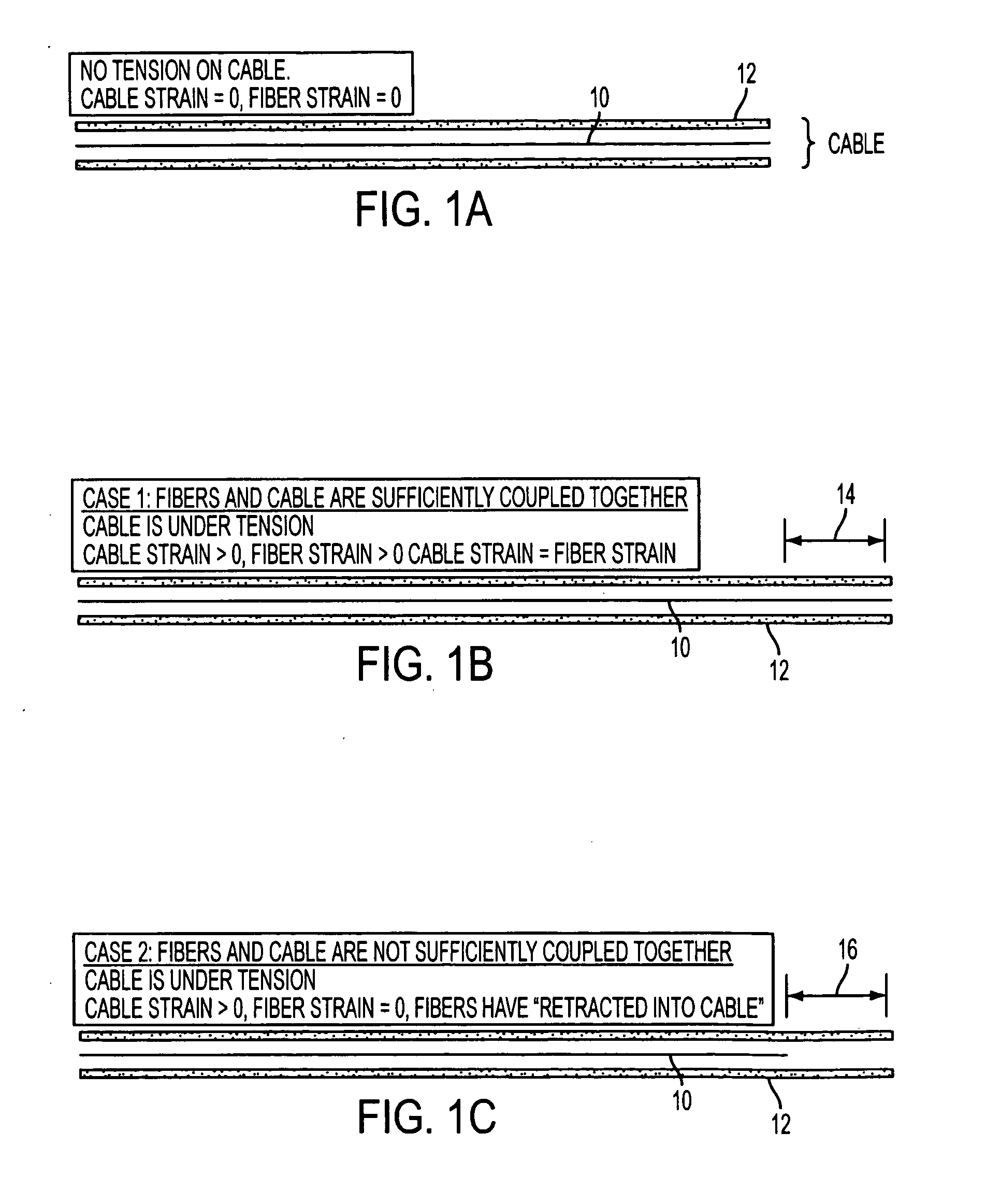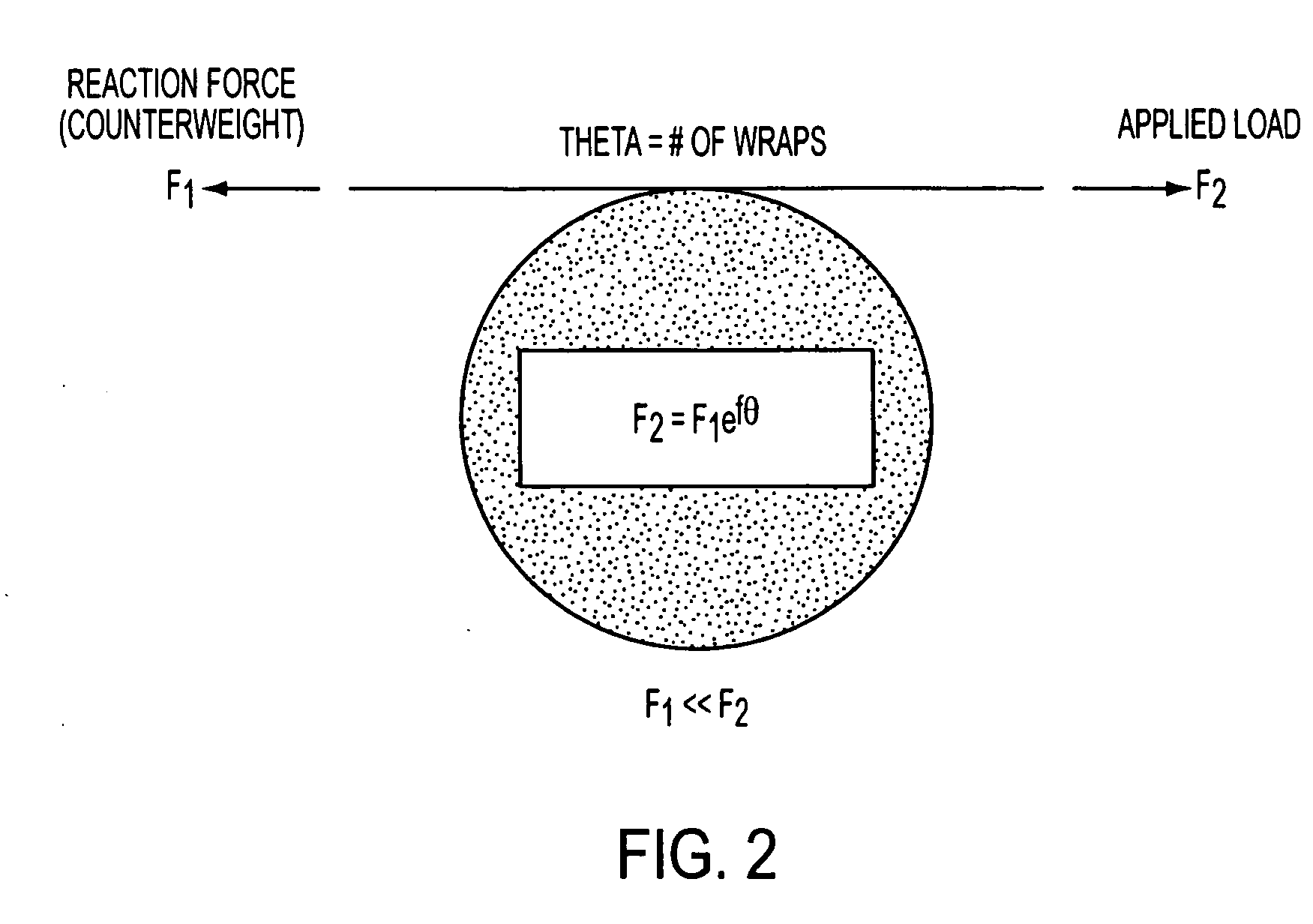Use of buffer tube coupling coil to prevent fiber retraction
a technology of coupling coil and buffer tube, which is applied in the direction of optics, fibre mechanical structures, instruments, etc., can solve the problems of fiber retracting, cable tension, significant disruption of network function, etc., and achieves reduced cable diameter, reduced cable length, and reduced cable length
- Summary
- Abstract
- Description
- Claims
- Application Information
AI Technical Summary
Benefits of technology
Problems solved by technology
Method used
Image
Examples
Embodiment Construction
[0019] The present invention will now be described with reference to FIGS. 2-4. Fiber retraction can be prevented in cable installations by utilizing coupling coils, preferably located in terminations or splice closures. Coupling coils operate under the principal of utilizing sidewall friction of a coil, often times termed the capstan effect. The capstan effect is demonstrated in FIG. 2, where the reaction force F1 required to counteract the applied load F2 is exponentially related to friction factor (f) and number of wraps (θ). This relationship can be expressed as F2=F1efθ.
[0020]FIGS. 3A and 3B show a cable according to the present invention. The components of a fiber optic cable are described with respect to FIG. 3A. Fiber optic cable 31 includes at least one fiber 32 disposed in a buffer tube 33 and a jacket 34 surrounding the buffer tube. The cable may also include strength members 35 which assist in transferring the load on the cable 31 and may be used to secure the cable to ...
PUM
 Login to View More
Login to View More Abstract
Description
Claims
Application Information
 Login to View More
Login to View More - R&D Engineer
- R&D Manager
- IP Professional
- Industry Leading Data Capabilities
- Powerful AI technology
- Patent DNA Extraction
Browse by: Latest US Patents, China's latest patents, Technical Efficacy Thesaurus, Application Domain, Technology Topic, Popular Technical Reports.
© 2024 PatSnap. All rights reserved.Legal|Privacy policy|Modern Slavery Act Transparency Statement|Sitemap|About US| Contact US: help@patsnap.com










